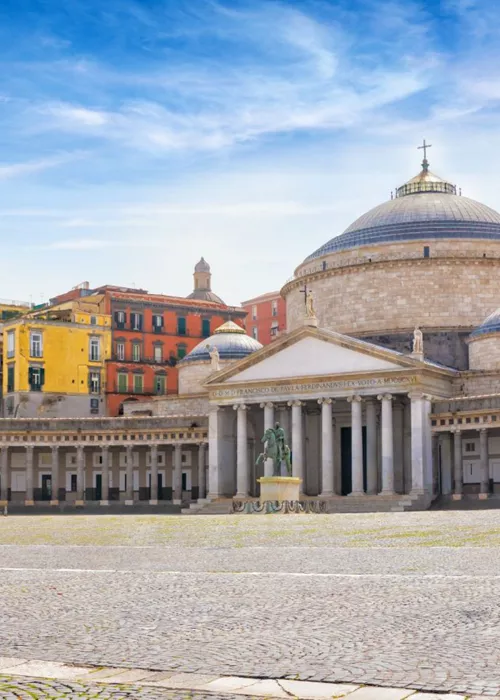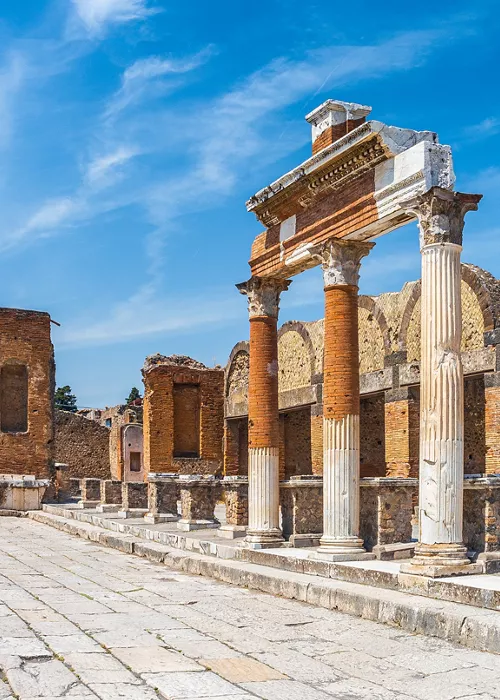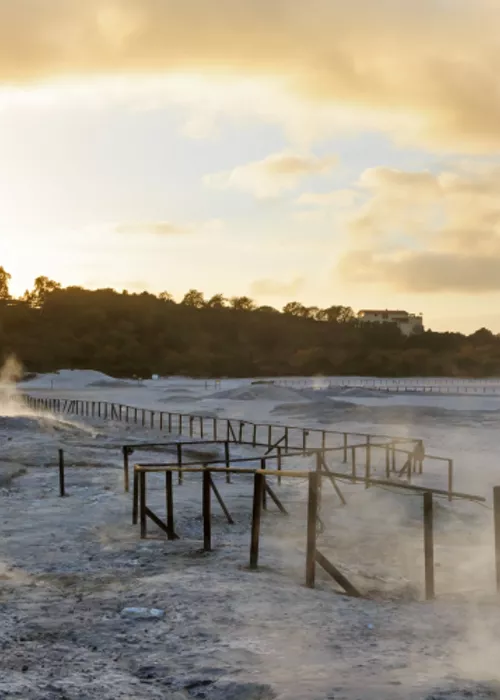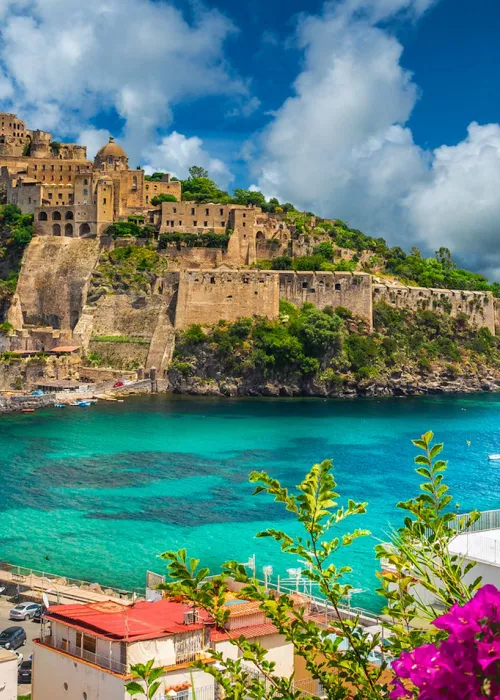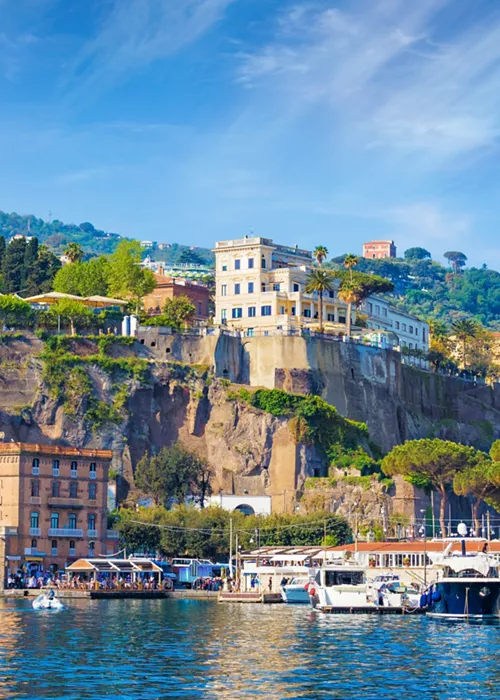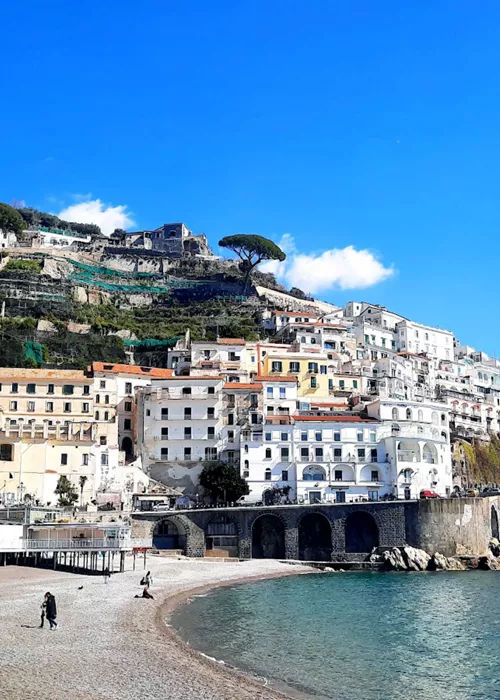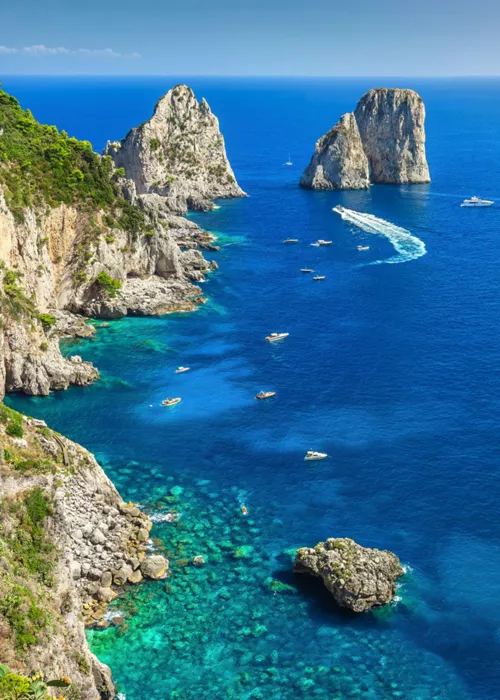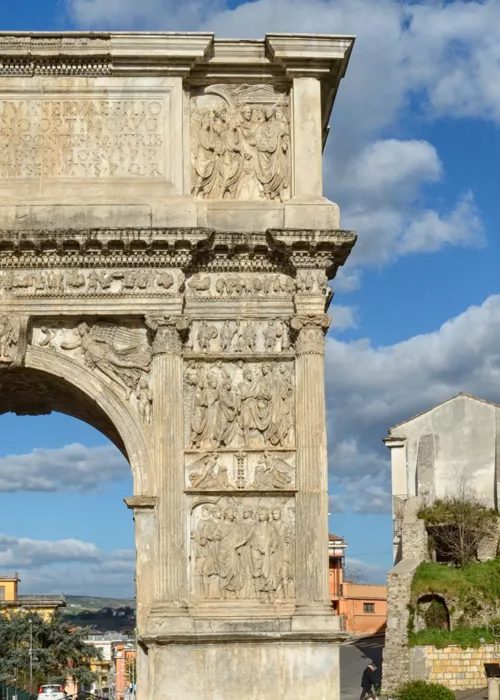Campania, the legacy of a flourishing past
5 minutes

Four breathtaking gulfs - including Napoli, Salerno, Gaeta and Policastro; 1 volcano, Vesuvius; 3 islands, Ischia, Capri and Procida. These are some of the most delightful and distinguishing features of Campania. A region rich in natural beauty and spectacular landscapes, where thanks to the southern Apennines the favourable climate plays a decisive role. Not insignificant is also the influence of Vesuvius, now silent and fertile, offering its slopes to agriculture with complex and mineral soils, suitable for the cultivation of vines. A heritage legacy that enriches the present.
Historical importance

The history of Campania extends from prehistory to the present day. Important cities of antiquity, such as Naples and Pompeii, have contributed to its current prestige. It has been influenced in the past by the culture of different peoples, including the Greeks, the Romans, the Lombards and the Normans. The footprint of the Greeks is responsible for the foundation of the colonies of Cuma and Parthenope. Naples, in particular, one of the oldest cities in Europe and an important cultural and economic centre in the Renaissance, has played a key role over the centuries.
During the Middle Ages, Campania was dominated by the Byzantines, followed by the Longobards and the Normans. Naples became the scene of conflicts, such as Spanish domination and popular uprisings. In the 19th century, Campania was involved in the movements for the unity of Italy, culminating in the conquest of Naples in 1860 by Garibaldi's troops. During the 20th century, the region experienced significant social and economic changes. Today, Campania is universally famous for its natural beauty, traditional cuisine and archaeological sites such as Pompeii and Herculaneum.
Wine Routes

A history and a rural territory to discover, where 7 Wine Roads are located, designed and conceived to encourage wine and culinary tourism. Along these routes, you can meet the Ladies of Wine, capable of welcoming you to their farms to make you discover the characteristic wines of this region. The roads sweep embracing the territory. "Campi Flegrei, Ischia e Vesuvio", "Penisola Sorrentina", "Costiera di Amalfi e Isola di Capri"; in the province of Caserta, the "Vini della Terra di lavoro" Road, and in Sannio and Beneventano those of the "Vino Doc Sannio", the "Vino Igt Beneventano" and the "Prodotti tipici Terre dei Sanniti".
A tour of Campania in a glass. Main varieties and winegrowing areas

The wine tradition of Campania dates back to the time of Greek colonisation. In the province of Benevento, we findAglianico del Taburno DOCG with notes of blackcurrants and well present tannin. Irpinia gives us the Docg Taurasi, based on Aglianico, the Docg Fiano di Avellino, obtained from the homonymous vine, and the Docg Greco di Tufo. Irpinia Doc, in its different varieties, is produced in the same area. Among the reds, after Aglianico, we find Sciascinoso and Piedirosso; among the whites, in addition to Greco and Fiano, you have Coda di Volpe and Falanghina. The Casertano area is known for Asprinio d'Aversa Doc, fresh and with citrine notes, as well as for Falerno del Massico Doc, obtained from Aglianico, Primitivo and Falanghina, depending on the type; Aglianico and Primitivo give great red wines, the former more austere, the latter softer. Interest in Alto Casertano is growing thanks to Casavecchia, Pallagrello Bianco, citrusy and soft, and Pallagrello Nero with notes of red and velvety fruits. In the area of Naples, in the siliceous sands we find the Doc Campi Flegrei where Falanghina and Piedirosso are cultivated, which give fresh and fragrant wines. In the limestone vineyards of Capri, Falanghina is slightly more structured; on the slopes of Vesuvius and Ischia, Piedirosso is richer and more complex, suitable for accompanying meat dishes. Lacryma Christi of Red Vesuvius, obtained from Piedirosso and Aglianico, has hints of purple.
Beans and broad beans recipe

The use of escarole in the kitchen is ancient, particularly in Campania, where we find it in various preparations. Given the presence of a lot of water, this vegetable is not very tasty - scaròla or scariòla from the late Latin scarìola, a derivation of edible "escarius" - so the ancient farmers had the habit of combining it with other ingredients; here is its happy marriage with beans, a unique, hearty and at the same time economical dish. In a creamy soup version, it becomes a classic of the Neapolitan tradition, combining the sweetness of cannellini beans with the bitter taste of escarole, all enriched by the spicy note conferred by chilli. To complete the dish, croutons of toasted bread, ideally pane cafone, and a raw spin of extra virgin olive oil to reinforce the character.
Difficulty: easy
Time required: 40 minutes, plus one night for soaking dried beans
Serves: 4 people
Ingredients
500 g smooth escarole
250 g dried beans
slices of bread
1 celery stalk
1 garlic clove
1 bay leaf
chilli pepper to taste
e.v.o. oil to taste
Method
Cook the beans (previously soaked overnight if using dried ones) for about 30 minutes in water with the bay leaves, celery and onion. Once cooked, blend one part until smooth and of medium consistency, add a drizzle of oil, salt and chilli pepper. Now clean the escarole and stew it in a pot with a clove of garlic, covered with a lid. Allow to cook for about 15 minutes, stirring occasionally. Drain the escarole and add them to the whole beans, also add the bean puree, season with salt and mix well so that everything is seasoned by cooking over a low heat for a few minutes. Place the bread slices on a baking tray and toast them in the oven at 180 for about 5 minutes Now serve the soup in soup bowls or, even better, in traditional earthenware crockery. Dress with oil and accompany with toasted bread.
Suggested pairing. Beans and broad beans with Coda di Volpe Irpinia Doc

Pairing: Coda di Volpe Irpinia Doc. The result is a soft dish with a good texture and varied flavours, more or less delicate depending on the addition of chilli pepper and the oil used. The ideal is a fragrant white wine with good structure and personality such as Coda di Volpe, with characteristic notes of fruit, citrus, herbs and hints of nuts. On the palate it offers a perfect balance of acidity and savour, warmth and softness, agile and concrete on the sip;


